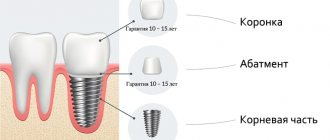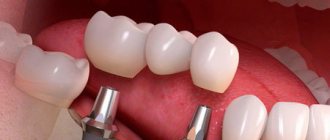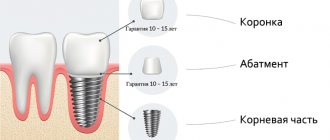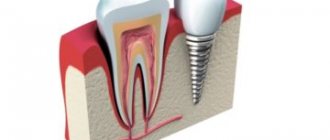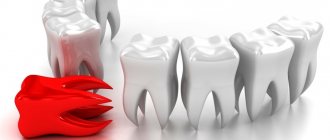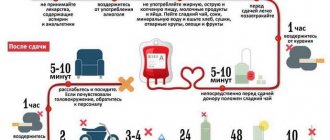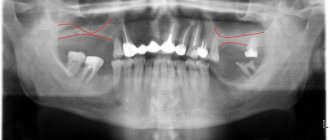Thanks to high-quality materials, innovative equipment and technologies, dental implantation has become safe. The risk of implant reflection and the list of contraindications is minimal. The process does not last long, instantaneous loading is possible. One of the newest developments is the compression technique, which makes it possible to restore teeth in a short period with minimal damage.
It consists of introducing an artificial root into the jaw tissue using the principle of a self-tapping screw. There are no incisions made on the gums, only a puncture that is smaller than the shaft of the tooth being implanted. For compression technology, cone-shaped implants with threads are used.
Contraindications to implantation
The classical method has proven itself over many years of practice with successful, stable and high-quality results. Today it is used not only in Moscow, but also in the regions. This is a time-tested approach that requires standard skills from specialists. The basal approach has been practiced in Europe for a long time, but in Russia it appeared relatively recently, it is about 10 years old. It requires the highest professionalism from doctors who constantly improve their qualifications, study abroad and improve their practical skills. As well as the availability of high-precision and modern equipment.
The difference between classical implantation and basal implantation is a wide range of restrictions on its implementation.
In old age, only basal implantation is indicated
Firstly, these are increased requirements for the quality and quantity of bone tissue; without insufficient volume, implantation will have to be postponed until better times (bone augmentation surgery is expected). Secondly, the presence of inflammatory processes in periodontal tissues, smoking habit, old age, diabetes mellitus - these are conditions under which you will simply be denied implantation according to the classical protocol.
The basal method of dental implantation allows us to solve the problems of patients who find themselves in the above life situations, which is very valuable. Indications for it are very diverse, and contraindications, on the contrary, are practically absent.
We also remind you that there are a number of general and relative contraindications for any implantation procedure, which any competent specialist should exclude at the treatment planning stage by collecting an anamnesis based on a general blood test of the patient, computed or multispiral tomography of the jaw, data on chronic diseases and the condition of the body.
What is better – classic or basal implantation?
Basal implantation is indicated for complete or almost complete absence of teeth. It is carried out both in case of bone tissue deficiency and in the presence of acute forms of periodontal tissue diseases. Classic implantation will not work in this case - the operation requires bone tissue augmentation. And this is extremely difficult, expensive and will take a lot of time. Therefore, in such situations, patients often hear a refusal and a recommendation to stay with removable dentures. We can safely say that today there is no full-fledged alternative to the basal implantation technique, especially in complex clinical cases.
Number of teeth restored
The classic protocol, as well as one-stage basal implantation, can be used to restore any number of teeth. But it is more preferable if you have lost 1 or more teeth than if you are faced with complete edentia.
The classical method is more suitable for restoring one tooth
In case of complete edentia, solving the problem of smile defects with a two-stage protocol will simply not be advisable due to the high cost and long treatment time (we will discuss these factors below). Basal implantology, on the contrary, implies a comprehensive restoration of lost teeth, at one time, and you will have at least 8-12 implants installed, which will ensure the beauty, functionality and durability of your future smile (in combination with the installed prosthesis, of course).
Interestingly, a basal implant can be installed simultaneously with the decayed tooth to be removed. With the classical approach, this is simply unacceptable; you will need to first remove the tooth, and then wait at least six months until the hole heals and heals, and the jawbone is restored.
The photo shows the installation of an implant in the hole immediately after tooth extraction
Implants used
In modern dentistry, implant materials from many manufacturers are used. Among them there are a large number of foreign manufacturers, but there are also domestic ones. Unfortunately, the quality of Russian implants is lower than foreign ones. The only significant advantage is the affordable cost compared to imported implants.
The most common brands of implants include:
- Nobel Biocare. The products of the presented manufacturer are unique in their kind and belong to the premium category. Implants are made of titanium - one of the strongest and most durable materials, which, at the same time, is characterized by complete biological compatibility. This property shortens the healing time of tissues and eliminates the risk of rejection.
- Straumann. Implants from a Swiss manufacturer are considered the most reliable system in the world. Thanks to the unique surface, healing proceeds as quickly as possible. Thanks to this, after installation of dentures there is no risk of adverse reactions.
- BioHorizons. Is a common American manufacturer of implants. The products are durable and low-injury during installation, which is explained by their unique root-like shape. Calcium phosphate is sprayed onto the surface of the implant, which accelerates tissue healing and promotes fusion of the pin body with the bone.
- Ankylos. Produced in Germany. The main advantage is the universal design, which allows the use of implants for most types of prosthetics. Due to the design features, the installed dentures are fixed below the gums, making them impossible to distinguish from real teeth.
The brands described have many advantages, while almost the only drawback is their high cost. There are other manufacturers, the scenes of which are below.
These brands of implants include:
- M.I.S.
- Oneway Biomed
- Osstem
- Bicon
- Alpha-Bio
Important to remember! Detailed information about the advantages and disadvantages of certain brands of implants can be obtained directly from the dental clinic.
Bone grafting
Treatment according to the classic two-stage protocol, as noted above, presupposes that you have a sufficient volume of dense bone tissue; without this condition, you will have to decide on a complex (both morally and materially) operation to build it up1 - this happens in 90 % of situations out of 100. Especially if you have been without teeth for a long time. After the operation, you will need to wait 3-6 months, and only then will you be able to think about implantation.
The photo shows a diagram of the sinus lift operation
Basal dental implantation – what is it? This is an opportunity to do without sinus lifting (in the upper jaw), without transplantation and replanting of bone blocks, without splitting the alveolar ridge in 97 percent of cases. And this is even if the patient is diagnosed with acute inflammatory processes in periodontal tissues.
Contraindications
Contraindications to implant surgery include:
- Pregnancy
- Treatment with chemotherapy
- Acute infectious diseases
- Severe forms of diabetes
- Presence of mental disorders
- Intolerance to anesthetic drugs
- Immunodeficiency state
- Severe heart disease
The decision to perform an operation is made on the basis of a detailed survey of the patient regarding contraindications, which is carried out during the preparatory period.
Common complications after implantation include:
- Tissue swelling
- Hematoma formation
- Pain syndrome
- Temperature increase
- Infectious infection
- Implant failure
Implant installation methods
Each approach is different. The two-stage protocol involves strictly vertical fixation of the artificial root, which is why it is necessary to strictly take into account the parameters of the bone tissue. Basal dental implantation assumes that the implants in the lateral sections will be installed at an angle. However, inclined installation is also possible in the anterior section - but here the atrophy, as a rule, is not so pronounced, so it is easier to install implants.
The angular location makes it possible to use a large area of contact with the bone, bypass potentially dangerous areas during the procedure (maxillary sinuses, ternary nerve), securely fix the basalt implant in the bone tissue, providing it with high primary stability.
The basal method allows you to install several implants at once with different angles of inclination
In addition, the classic involves installing implants in a rather traumatic patchwork manner, with peeling of the gums and suturing. Risks and complications during basal dental implantation are reduced to almost zero thanks to the minimally invasive installation of artificial roots using surgical stencils. Through holes in the templates, they are literally screwed into the bone through a puncture, providing high compression and tightening the tissue around them.
Another important difference between the basal protocol is the use of the deepest parts of the jaw bone. Implants can be very long, so they often extend beyond the jawbone (for example, placed in the chin area or cheekbones). Due to this, the strength of their fastening again increases. By the way, this is one of the explanations why there is no need to build up the bone - the implants go deeper, behind it.
Advantages of basal technology
- Implantation of implants and installation of the prosthetic system are performed in one stage.
- Implants are installed using a minimally invasive method - through a micropuncture of the gums or in the bed of an extracted tooth.
- Refusal from osteoplasty.
- Implantation is possible in cases of critical lack of bone volume, chronic periodontal diseases, and jawbone.
- Short treatment time - from implantation to prosthetics takes 1-4 days.
- Minimum contraindications.
- Rapid osseointegration.
- High initial stability of implants.
- The prosthesis acts as a splinting structure that combines implants into a single system, stabilizing them and preventing displacement even under heavy chewing load.
- Minimal risk of rejection.
- Fast rehabilitation.
- Extensive prosthetic options.
Minimally traumatic, bloodless, no stitches, allow implants to be installed in elderly, weakened patients. Basal complex is applicable for various serious diseases - compensated diabetes mellitus, HIV, hepatitis, etc.
Implant models
The classic method involves installing only two-piece implant models. Basal dental implants (look at the photo to see what they look like) are one-piece. They have a smooth surface on the neck and are coated with an antibacterial composition that prevents plaque accumulation and the development of inflammatory processes.
This is what one-piece implants look like
To restore a smile using two-stage protocols, experts advise choosing proven implant models, such as Nobel or Straumann. Basal implantation and subsequent dental prosthetics involves the installation of Oneway Biomed models.
Basal and two-stage implants are completely different and are suitable for different clinical cases. Therefore, it is impossible to definitely select arguments for and against their installation.
Reviews
This section presents user reviews about basal implantation. Here you can get more detailed information about the features of the procedure, the cost of services, and the quality of prosthetics in various clinics.
Basal implantation is a method of implantation that involves introducing the base of the prosthesis into the deep layers of the jaw bone. The main advantage of the operation is that the installation of permanent dentures can be carried out several days after implantation, which is why this method is also called one-stage. The procedure is characterized by a short tissue healing period and relatively low cost. At the moment, basal prosthetics is the main analogue to the classical implantation method.
Installation of the prosthesis
For those patients who, for some reason, have chosen classic dental implantation, the most unpleasant moment is the fact that they will be able to see a new smile or a permanent fixed prosthesis only after a long period of time, only after the implant has completely fused with the bone (include here the time for installation of the healing abutment and abutment). As temporary prosthetics to hide the defect, they are offered the installation of a removable immediate prosthesis “butterfly”. What is suffering here? Aesthetics of a smile, self-confidence, quality of nutrition and chewing of food.
The photo shows a temporary butterfly prosthesis
What do patients who choose Basal complex receive? Fixation of abutments and a smile immediately on the day of implant installation, or a few days after it. Moreover, the structure here is stabilized by a special metal beam, created individually for each patient, and a beautiful fixed prosthesis made of metal-plastic or metal-composite, which necessarily contains artificial gum (therefore, there is no need for an additional procedure for its formation). The service life of such a prosthesis is 5 years or more, it does not require additional correction and relining (it is attached directly to the cement composition), so the patient does not need to re-prosthetize for a long time.
But that's not all. A basal implant installed according to a one-stage protocol has an urgent need for the patient to immediately put it to work, or, more simply put, to start chewing. This ensures rapid regeneration of bone tissue cells, prevents implant loss and loosening, and shortens the rehabilitation period. Of course, you need to start chewing gradually; if you have a denture installed right away, this does not mean that you need to crack nuts and eat solid foods; at first, limit yourself to soft dishes and soups. And after two or three weeks, switch to a nutritious diet, but of course, everything should be within reasonable limits. Fixed dentures should be treated in the same way as natural teeth.
Installing the prosthesis directly on the implants will help improve survival
Common Questions
When choosing a method of prosthetics, many people have a number of questions. This article contains detailed information about basal implantation.
In addition, readers are often interested in the following questions:
- Which implantation technology is better, classical or basal?
Classic implantation is considered a more reliable and durable option. It has many advantages, such as a lower risk of implant failure. However, this method cannot be used for certain contraindications that do not limit the possibility of basal prosthetics. In addition, a significant advantage of the basal method is that the prosthesis is installed a short time after the operation.
- Compression implants – what are they?
This is a type of implant that, after implantation, is artificially surrounded by bone tissue. Due to this, the quality of their fixation and, consequently, the reliability of the structure increases. Such implants are often used for one-stage prosthetics.
- How is basal implantation of posterior teeth performed?
Basal technology is not used for prosthetics of less than 3 teeth. To restore molars, as a rule, the classical method is used.
- What is single-phase implantation?
The word “single-phase” has a similar meaning to “single-stage” and is used to refer to a procedure that involves the installation of permanent dentures shortly after implantation.
- Boneless implantation – what is it?
Boneless implantation is the general name for a set of procedures associated with basal prosthetics. The procedure covers the stage of implantation, creation and installation of a prosthesis. Contrary to misconception, boneless implantation is not a method in which bone tissue is not affected.
Disadvantages of both types of implantation
According to reviews, basal dental implantation is in extraordinary demand in Russia today, but finding a truly competent specialist and clinics that provide such a service is very, very difficult. Increasingly, people from the regions are flocking to Moscow, and it is here that doctors, albeit in single dentistry, practice a similar approach. In the regions, patients have to spend time and money on two-stage protocols, or put up with the thought of having to wear removable dentures.
What is better, classic or basal implantation? In fact, both have their drawbacks. Each has both pros and cons. The first one is not suitable if you have complete edentia and bone atrophy; you will spend a lot of time and money. The cost of treatment in this case will be very high. For comparison, to restore teeth on two jaws at once, get ready to pay about one million rubles. Basal dental implantation is relatively inexpensive: it costs approximately 500 thousand rubles for both jaws. And this comes with a prosthesis.
Go ahead. For example, the negative consequences of basal implantation can overtake you if you turn to an inexperienced and unprofessional doctor. Remember that only a highly qualified and certified specialist has the right to carry out such a procedure. Pay attention to what specialty the doctor performing it should have - it is better if it is an oral and maxillofacial surgeon. After all, in most cases he will have to work in conditions of bone atrophy; he should ideally have knowledge of the anatomy of the jaw.
After watching a video about basal dental implantation on our website, you will also understand that the main task of an implant surgeon even at the planning stage is to thoroughly work out the entire treatment process. To do this, the clinic providing the service must have the most modern equipment, and in particular 3D computer modeling programs to eliminate errors, calculate the location of implants in the bone, and create surgical stencils for the safe introduction of artificial roots.
VIDEO
Manufacturing of implants
Many patients who are preparing for prosthetics are interested in the question of how dental implants are made. First of all, it should be noted that manufacturing technology is individual for each manufacturer.
First of all, product drawings are prepared, which are subsequently transferred as a three-dimensional model to a computer. Subsequently, the model is manufactured using automatic equipment, which is characterized by high accuracy and reliability. The product is then polished to eliminate any unevenness or irregularities in shape that could affect the functionality of the implant.
The resulting product is necessarily exposed to antiseptic substances or ultraviolet irradiation, which destroys harmful microorganisms. The final stage is treatment with agents that increase the compatibility of the pin with living human tissue. Modern implants are made from high-strength metal alloys.
Thus, the manufacture of an implant is a complex process that is carried out using high-precision equipment under sterile conditions.
What alternatives exist
We have discussed in detail the differences between basal and two-stage or classical implantation. As you can see, there are more than enough of them, so to speak, these are generally different philosophies of life - the future and the past in implantology, innovations and classics, quick results and expectations, different clinical cases.
The basal protocol, perhaps, has no equal in the case of inflammatory processes in periodontal tissues and other difficulties: old age, diabetes, smoking, osteomyelitis. But at the moment this is far from the only option for a quick solution to the problem of edentia. If we talk about one-stage implantation protocols, that is, about quickly restoring a smile in 1-3 days, then there is an alternative.
First of all, this is a method of prosthetics using three all-on-3 implants (Trefoil) from Nobel for the lower jaw, when the problem of edentia and minor bone atrophy can be solved with just 3 implants installed in the frontal zone of the jaw.
Implantation according to the Trefoil protocol involves the use of only three implants
In general, there are many options for the upper jaw, especially when it comes to acute bone atrophy - zygomatic implantation in any of the all-on-4, all-on-6 complexes. It is also used to restore the segment of posterior teeth from above. This option involves the use, in addition to the classic models of implants, of two, four or even six zygomatic “helpers”. They are incredibly long, so they pass through the spongy, cortical, and zygomatic layers of bone, not subject to atrophy and inflammation. They are held so firmly that there is no chance of them loosening or falling out.
By the way, the all-on-four and all-on-six complexes successfully solve the problem of edentia in the lower jaw, and not just in the upper jaw. True, zygomatic models cannot be used here. But there are also quite a lot of treatment options, both on Nobel implants and on Straumann models (Pro Arch on four implants, Pro Arch TL on six), Osstem and others.
Now you have learned what basal and classic dental implantation are, and you clearly understand their fundamental differences. In any case, implantation is a way to a high-quality standard of living, an opportunity to forget about problems with a smile for many years. See the before and after photos, really incredible transformations? And everyone makes their own conclusion about whether this is what you need.
Basal implantation on all teeth, before and after photos
Video review of the patient after basal implantation with immediate loading
Notice
: Undefined variable: post_id in
/home/c/ch75405/public_html/wp-content/themes/UltraSmile/single-item.php
on line
45 Notice
: Undefined variable: full in
/home/c/ch75405/public_html/wp-content /themes/UltraSmile/single-item.php
on line
46
Rate this article:
( 7 ratings, average: 4.43 out of 5)
implantation
- Zhelezny S.P., Zheleznaya Yu.K. Results of using dental implants after bone grafting of the jaws. Journal of Siberian Medical Sciences, 2020.
Consulting specialist
Bespalov Roman Dmitrievich
Specialization: Implant surgeon, Ph.D. Experience: 24 years
Interaction of implants with the body
- The alloy of implants is invisible to human immune cells and therefore does not cause inflammation of surrounding tissues
- When inserted, a compression effect is created, leading to compaction of the bone around it. This provides initial fixation sufficient for the installation of a denture. To facilitate the construction, metal-plastic crowns are attached, which can be replaced with ceramic ones a year after prosthetics.
- Tissue trauma during implantation activates building cells (osteoblasts), causing increased bone formation in the jaw.
- Constant chewing load from the third day after surgery improves blood circulation and promotes bone volume growth.
Comments
Basal dental prosthetics is an expensive procedure, but is it still necessary to make adjustments to such teeth after some time?
Galina (03/19/2019 at 08:30) Reply to comment
Basal dental prosthetics is an expensive procedure, but after some time an adjustment to these teeth is still needed, and will this adjustment be included in the warranty period.
Galina (03/19/2019 at 08:35) Reply to comment
Hello, I installed an implant after tooth extraction at the Ultra Smile clinic. The operation was painless, everything was secure, and the wounds healed quickly. Now you have a beautiful, full smile! Thank you!
Arkhip (03/22/2019 at 07:44) Reply to comment
There was a need to put several teeth in a row; conventional prosthetics take a lot of time. Is it true that basic dental prosthetics takes no more than a week?
Roman (03/22/2019 at 01:38 pm) Reply to comment
You need to get a tooth fixed and want to address the problem thoroughly. The question arose: which dental implantation is better, basal or classic? I don't want to choose at random! And are there any disadvantages to implants?
Anton (03/22/2019 at 01:53 pm) Reply to comment
Which implantation is better, classic or one-stage, the decision is made by the doctor after examination
